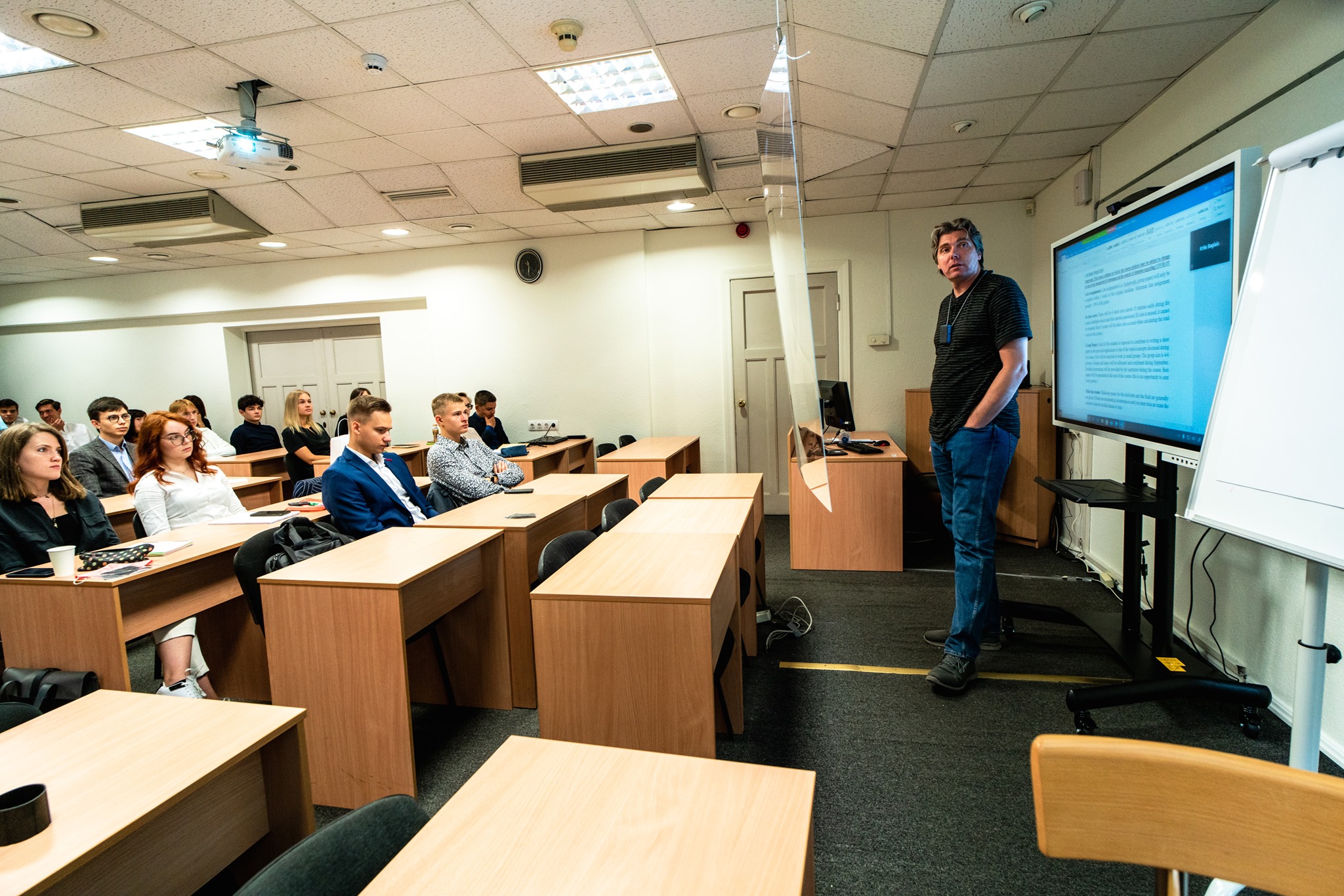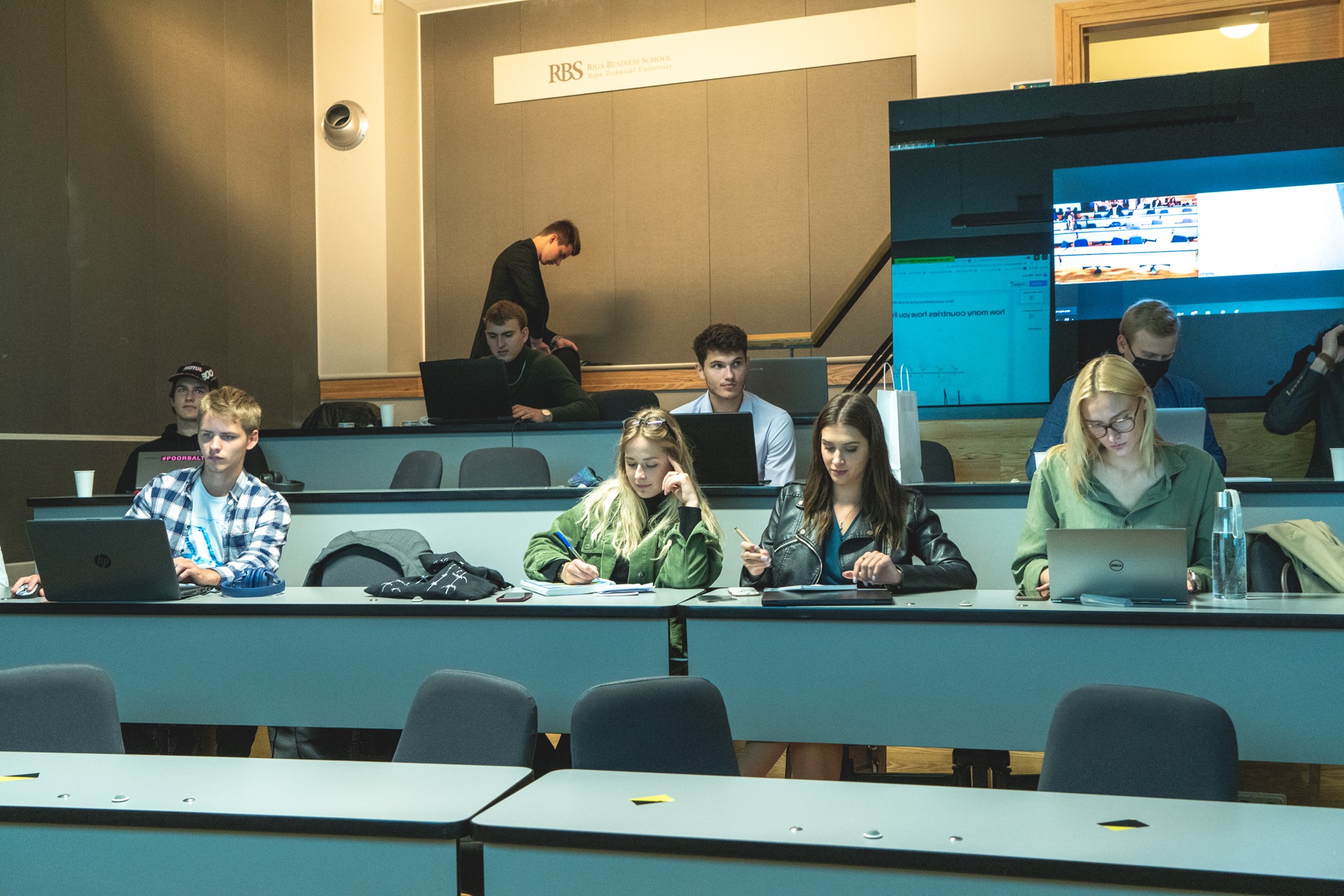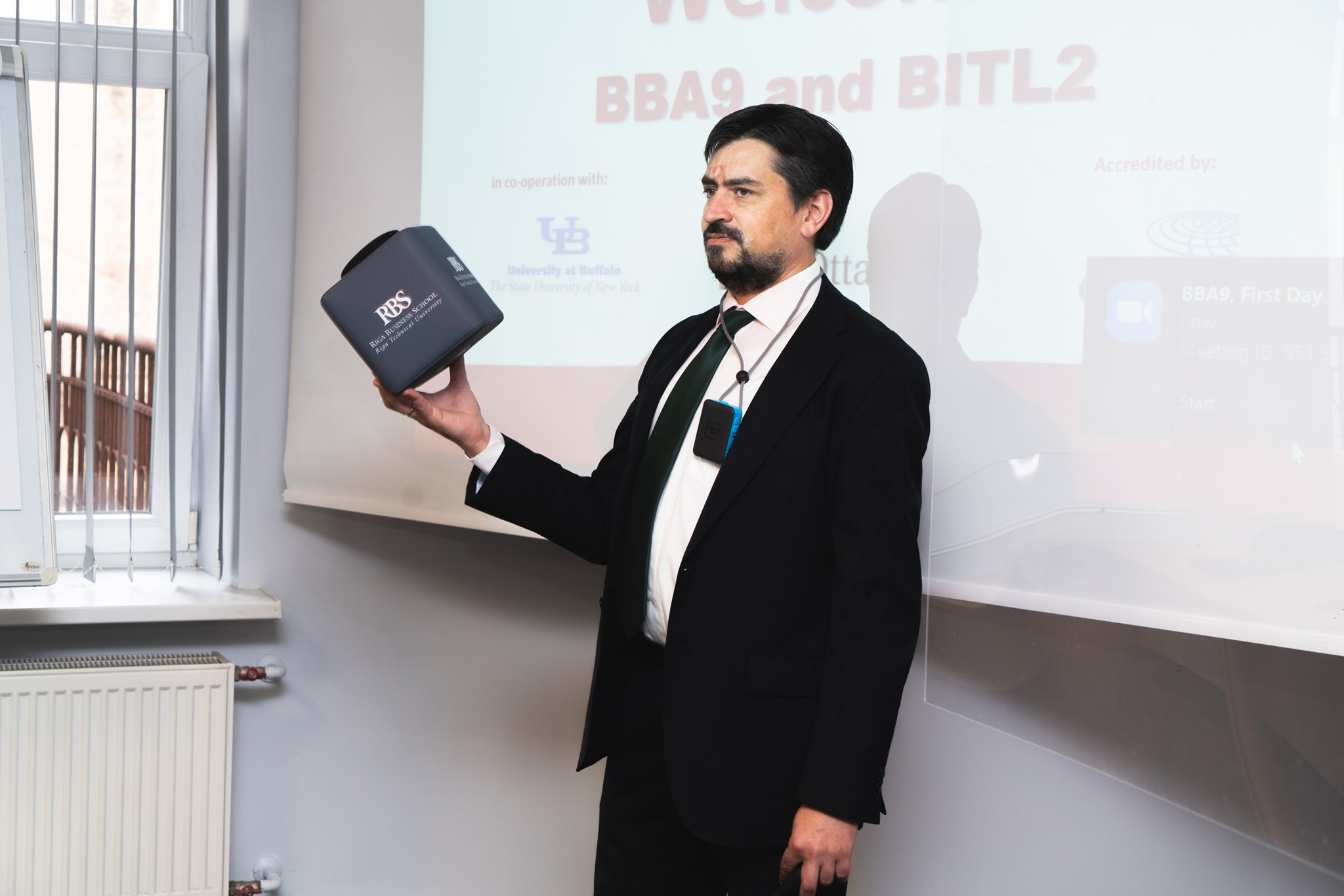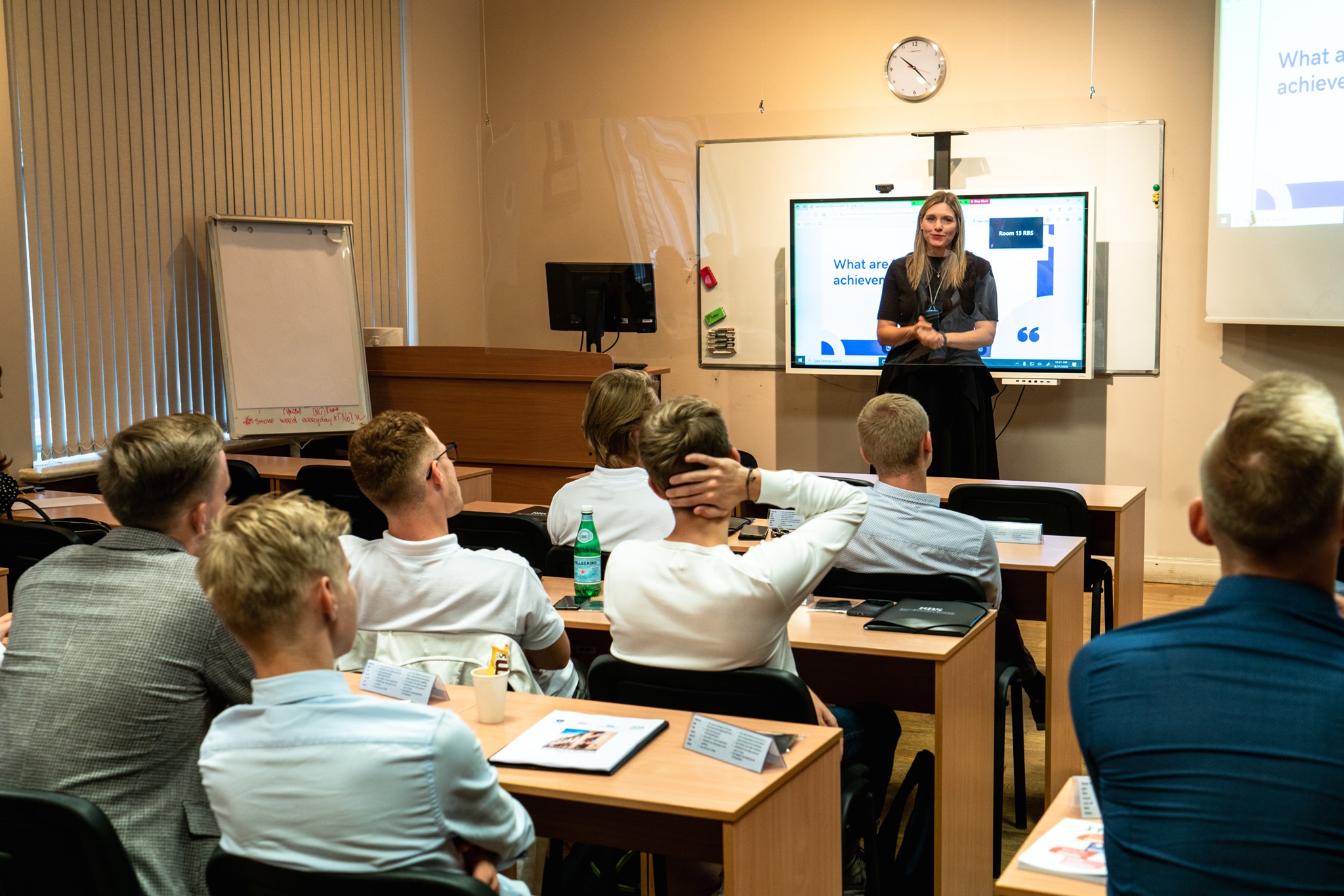Hybrid class case study with Riga Business School
Creating an effective AV setup for hybrid classes with Catchbox microphones

Published on: Nov 24, 2021
It's fair to say this year has been a challenging one for educational institutions everywhere. Most schools and universities have had to dramatically reshape themselves in order to adapt to an ever-changing global emergency.
Faced with a sudden requirement that some or all learning be undertaken remotely or in a socially-distanced capacity, institutions such as Riga Business School were required to solve a mountain of technical challenges in a very short space of time.
In this case study, IT manager Ilja Afanasjevs details how he and the RBS team moved swiftly to create an effective and intuitive solution for hybrid teaching and distance learning.
Riga Business School faces an unprecedented challenge
Ilja Afanasjevs the IT manager for Riga Business School, overseeing all of the technology required to create dynamic and engaging courses for students. A PHD candidate at RTU, Ilja is passionate about implementing innovative solutions that provide both ease of use and reliability at all times.
Prior to the pandemic, video-enabled classes were something that might happen once or twice a month at RBS. Teachers and guest lecturers unable to make the trip to Riga could be ‘beamed in’ via video to a packed seminar hall.
However, with the outbreak of Covid 19 and the enforcement of strict travel restrictions and social distancing requirements, the school has had to adapt to the unprecedented situation in just a couple of months time.

Initial breakthroughs and persistent problems
Ilja was tasked with ensuring teaching could continue whether students and staff were permitted to be physically present in the classroom or not. In the months following the initial emergency situation in Latvia, Ilja experimented with a myriad of different cameras, classrooms layouts and video conferencing platforms in order to create effective hybrid classes for students.
'After a lot of testing, we opted for Zoom as our video conferencing platform. The interface is intuitive for the teaching staff, and we can also monitor activities across many classrooms. We also found the right cameras to film classes, and even added screens to the classrooms after a request from staff. This way, teachers can see their students even when they are joining from home via video.’
Despite these breakthroughs however, there was one persistent problem for Ilja and RBS. Students who joined the class from home were unable to hear their teacher during the class.
'Whilst most laptops and even some of the cameras we tried had built-in microphones, none of them did a good enough job of picking up the teacher’s voice. We had tried to use headset mics before to solve this problem, but most of the staff didn’t like wearing them or have to adjust the settings before a class.'
Finding the right microphone
Ilja identified the need for a powerful, portable wireless microphone that was easy enough for teaching staff to simply turn on and start teaching. Though he had seen the Catchbox Audience mic in action in classes and at events, he hadn’t used the Presenter mic previously. After a couple of tests and feedback with staff, it became clear that the Presenter mic provided the perfect solution to the audio issues he’d been facing.
'The Presenter mic is by far the best microphone for teaching that we’ve used to date for distance learning and hybrid classes. Staff just need to press a single button and put the lanyard on for the class to begin. Best of all, when the class is over, they just need to plug the USB back for the mic to turn off for it to start charging.’
RBS has moved between fully remote and hybrid class models, depending on the restrictions in place. In all classes, staff are now equipped with the Presenter mic so that all students can hear clearly, regardless of whether they are online or in the classroom. Where possible, classes have also introduced the Catchbox plus audience mic to encourage discussion and debate between in-class students and thir lecturers. This microphone setup has been specifically recommended by Zoom for use in hybrid classrooms.

A masterclass in Hybrid Classroom technology
Whilst the pandemic has created dramatic changes in the classroom, education institutions have also faced organizational difficulties as they grapple with the new normal. Many events have been cancelled this year due to travel restrictions, but Ilja and the RBS team were able to make a planned ‘Transformational Leadership Masterclass’ a hybrid success.
With Masterclass leader Professor Agnis Stibe in Paris and the heads of departments from across Riga Technical University joining for an in-person experience on University premises, the technology needed to allow for dynamic back and forth between speaker and attendees.
To achieve this, the participants were divided into tables of four. Using zoom breakout rooms, the speaker was able to work with each group at any given moment, switching between breakout rooms with ease.
In order to provide a dynamic, conversational experience, each table was equipped with a Catchbox Plus audience mic. When engaging with the speaker, each table could take the audience mic off the wireless charger and kickstart the discussion. Then, when it was time for the speaker to move on, participants would place the Catchbox back on the charging pad, muting the mic.
The result was an inspiring and hugely successful workshop, which provided a unique experience for both participants and the speaker. Ilya and his team received notable praise from RBS director Janis Grevins, who believed the innovative setup provided a ‘truly great learning experience’ for himself and other participants.
Hybrid teaching is here to stay
Though most students and staff look forward to returning to the classroom, Ilja believes that some variations of Hybrid classes and/or blended learning will become a lasting feature of the student experience.
‘Hybrid learning gives both students and teachers additional flexibility with their schedules. Class recordings can also be watched again later, making them a lasting resource, and students can continue their studies even when they are unable to be physically present.’
Studies show students will welcome such changes, with many favoring a mixed study program over a fully remote one. Whatever the future holds, an effective audio setup for hybrid classes will be crucial to ensuring everyone can make the most of their study experience.

If you would like to learn more about Ilja’s story, or would like to see how Catchbox can help your institution improve it’s hybrid learning setup, schedule a demo with our expert team now.